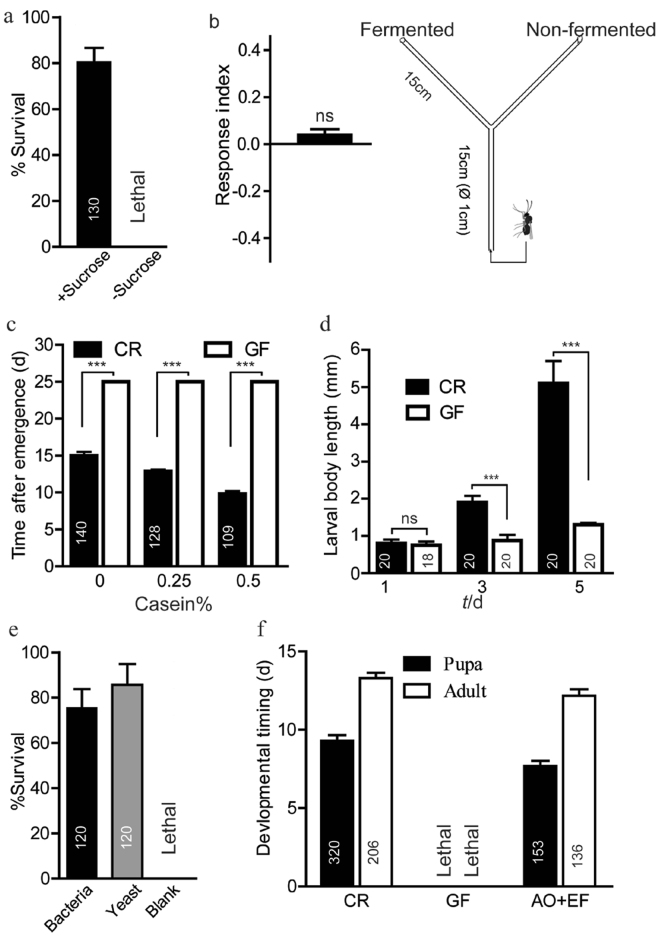Figure 6.
Commensal bacteria were essential for survival and fitness of Drosophila. (a) Sucrose was essential for Drosophila survival. 30 eggs were placed in the casein-cornmeal-agar media with (+Sucrose) or without sucrose (−Sucrose) in 6-mm Petri dishes. The eclosed adults were counted for survival ratio. (b) Fermentation was not required to confer protection against endoparasitoid wasps. Schematic drawing of the Y maze olfactory assay used for behavioral experiments with the wasp Leptopilina boulardi. Thirty wasps were placed at the bottom of the Y maze with a choice of fresh or fermented grape juice and wasp counts from each branch were made after 20 min. The response index of L. boulardi in the Y maze olfactory assay. (c) Microbiota facilitated the timing of adult emergence. Germ free (GF) eggs were transferred to autoclaved vials to generate GF flies, while GF eggs were replenished with mixed bacteria to conventionally reared (CR) flies. The timing of adult emergence was recorded in a cornmeal media containing casein over time (the cutoff for GF flies was arbitrarily assigned as 25-days). (d) Microbiota promoted the larval growth. The length of larval bodies was measured at day 1, 3, 5 ALE. (e) The source of microbes solely supported Drosophila survival. Thirty eggs were placed in the agar media with (Blank) or without microbes (Bacteria, Yeast), and the eclosed adults were counted for survival ratio. (f) The timing of pupa formation and adult emergence of flies in grape vials was recorded. CR flies developed from eggs without sterilization. GF eggs were transferred to vials with sterile grapes, while Acetobacter and Enterococcus (AO + EF) were replenished in vials. The timing of pupa formation and adult emergence was recorded, respectively. ANOVA tests with LSD post hoc analysis. Mean ± SEM. Symbols: NS p > 0.05; **p < 0.01; ***p < 0.001.

